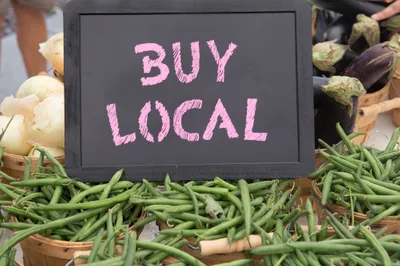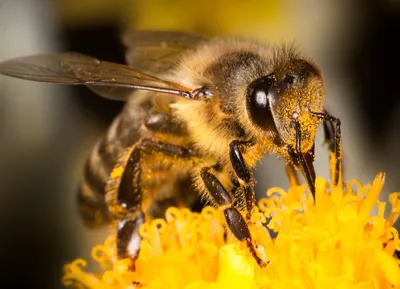When it comes to lingo for agro (or agriculture), things have become a lot more complex than the simple “organic” vs. “non-organic” terminology of the past. Today, many of us are no longer willing to tolerate large factory farming that puts the safety and welfare of animals, human laborers, and the environment at risk.
That’s why many are embracing these nine hot trends in farm-to-table, agriculture, and alternative food movements…
1. Community Gardening
There’s no way to better get to know your neighbors than by toiling in the soil of a community garden. Sharing the work and sharing the crop bounty (i.e., beefsteak tomatoes, garlic, kale, cucumbers, and peppers) requires a tag-team effort on behalf of many concerned members of a community. Typically, they set up in an abandoned lot owned either by the city or a nonprofit organization after permission is granted. From there, the land is often broken down into individual plot assignments and members work together to grow nutritious food and beautify urban community green spaces.
2. Locavore
It makes sense that we’d like to know where our food comes from. The aim of locavores, who consume a diet of mostly local food, actually does greatly benefit local growers as well as the environment—especially when you consider that those oranges from Latin America traveled up to 6,000 miles to get to your supermarket. By buying most of your food locally or within 100-miles of your home, you can cut carbon footprint, support local agriculture, and find some really great recipe inspiration at your local farmer’s market.
3. Homesteading
You might already have homesteading tendencies and not even know it—that’s if you quilt, knit, pickle, can, make soap or candles, or brew your own beer (like my husband does). The homesteading movement is all about creating a self-sufficient home that makes it’s own household supplies, food, and clothing. If the theme song from Little House on the Prairie just came to mind, don’t break out the bonnets just yet. Many urban pioneers are homesteading on a much smaller scale by installing solar panels, wind power, setting up urban beehives, rooftop gardens, and raising chickens and ducks.
4. Co-op
There is power in ownership, just ask the members of a co-op, or a cooperatively owned grocery store where likeminded shoppers are also the co-owners. Typically, the market side of the business forms a direct agreement with food growers and suppliers, cutting out the middleman and getting grub on the shelves, usually locally and much less expensively. So it’s not all tempeh and kale chips, but the price of membership does include monthly fees and usually board meetings (although rules vary by co-op).
5. Hydroponics
If you’ve placed a rose in a glass of water in the last year you’re already hydroponically inclined. On a much larger scale, hydroponics grows crops without soil, using water to sprout roots in a ebb and flow or continuous drip or wick style of agriculture. This means, you’ll see a lot of hydro garden set-ups on urban rooftops or in garages, or backyards. And before you even think it, hydroponics is not only for growing weed!
6. Foodscaping
Foodscaping, or turning your lawn into an edible garden, just makes sense if you eat a lot of produce that you can grow locally. This movement creates a welcoming ecosystem for birds, bees, and other beneficial insects—while cutting out the use of chemicals (i.e., fertilizer and pesticides) in urban communities, which harkens back to the “Victory Gardens” of World War I and II, to deal with food shortages.
7. Urban Beekeeping
Speaking as a person who recently visited a lavender farm to learn about urban beekeeping, I’m all a-buzz over reviving the honeybee population. This past year, bees and hives suffered due to suspected insecticide use. The bottom line is that we need bees to pollinate our food supply. Luckily, urban beekeepers are erecting small hives in an attempt to bring busy bees to big cities—like Seattle, Denver, New York, Los Angeles, and San Francisco. I hope to start my own beehive in my backyard garden as early as next spring.
8. Permaculture
Permaculture, or working with nature, instead of against it, is a movement that embraces natural systems. For instance, instead of separating and keeping livestock in the exact same place on a farm, permaculturists rotate animals to allow for natural agro-forestry. First, cows graze a paddock and fertilize it naturally with manure before moving to another. Second, chickens dig grubs to eat from the manure, naturally spreading around seed. With no chemical or antibiotic infused grain feed, one stage of permaculture naturally supports the next.
9. Freegan
The freegan movement is focused on cutting food waste. And with the Natural Resources Defense Council estimating that over $165 billion of American food is wasted annually, you might want to think twice when you toss out your lunch. Freegans (a combination of the terms “free” and “vegan”) deem most of what’s tossed perfectly edible, even if it’s dented fruit or slightly slimy kale. So the next time you see a dude rummaging through the trash bins behind the grocery store, he might just be a dumpster diver opposing the evils of consumerism and doing his part for the environment.










